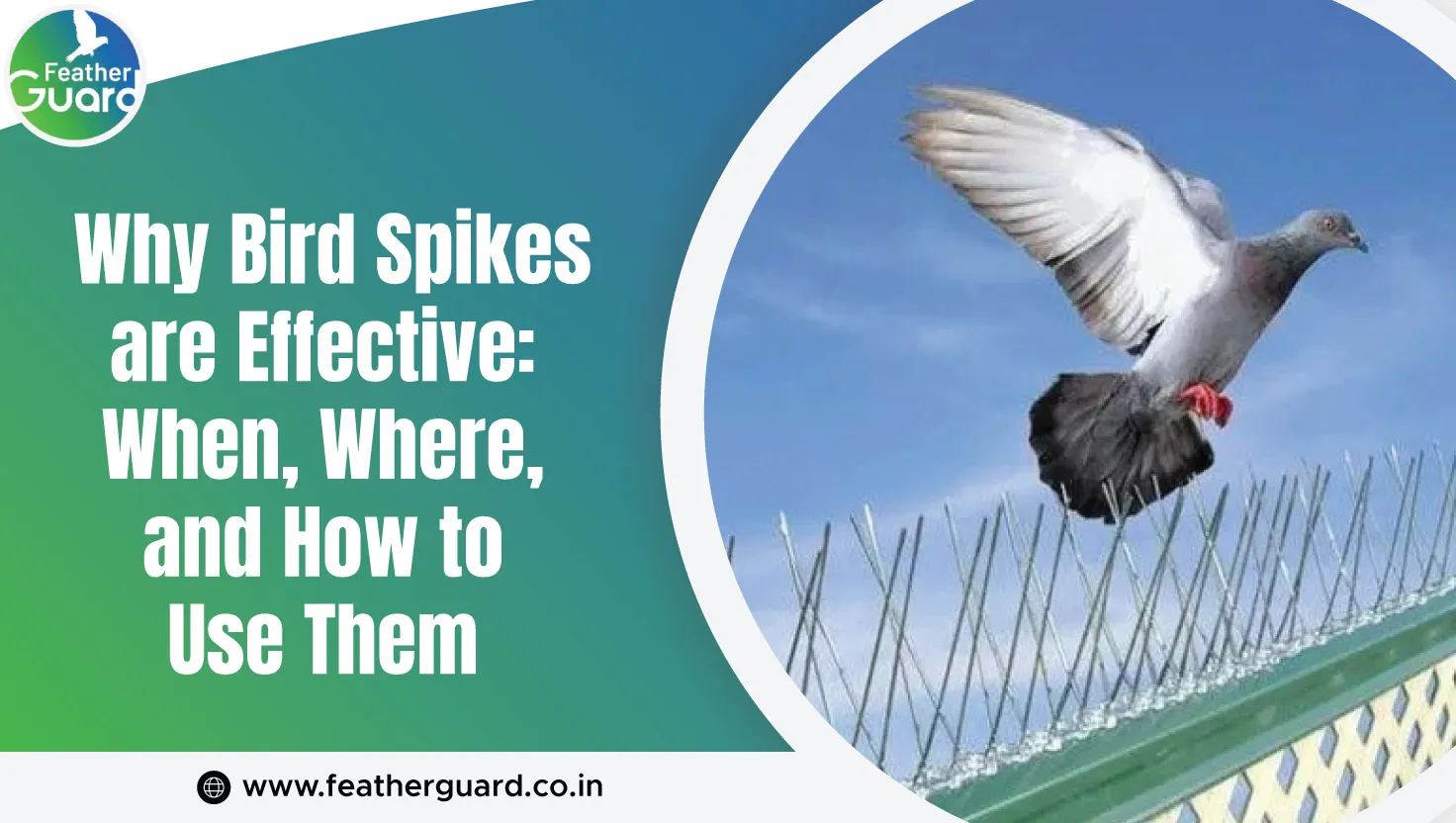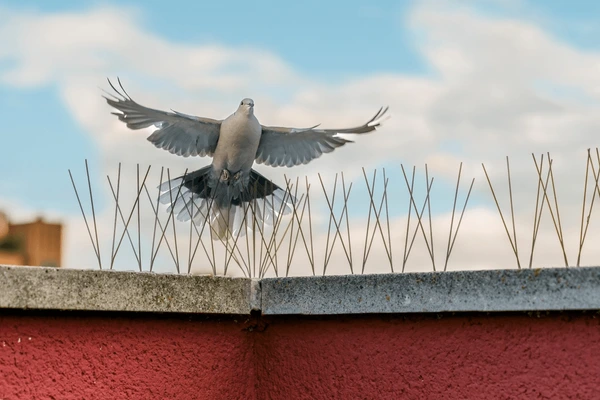
Bird spikes offer a straightforward, humane way to keep birds from landing and nesting on your property. Made from rows of thin, durable rods of stainless steel or UV-resistant polycarbonate, these spikes are installed on ledges, beams, signs, and other perching spots. The uneven surface makes it uncomfortable for birds to land or build nests, so they naturally move on without getting hurt. By blocking common resting areas, bird spikes help prevent messy droppings, corrosion, and damage to paint, metal, and masonry. They also stop nests from clogging gutters and vents, reducing fire risks and maintenance costs. Easy to install and maintain, bird spikes blend into architecture without detracting from your building’s appearance. Best for commercial and residential use, they keep walkways, windowsills, and rooftops clean, promoting a healthier environment. Use bird spikes to protect your home or business and enjoy a bird-free, damage-resistant property all year round.
When to Use Bird Spikes
- During Nesting Season: Spring and early summer are prime nesting seasons for many bird species. If ledges, rooftops, or window sills become nesting sites, bird droppings and debris can accumulate rapidly. Installing spikes before nesting begins ensures birds move on to safer, more natural nesting locations.
- When Dealing with Large Flocks of Birds: Large groups of pigeons, starlings, or sparrows can create significant problems, including noise, droppings, and clogged gutters. Bird spikes prevent entire flocks from settling, breaking up roosting sites, and sending birds to more suitable perches.
- To Protect Property from Damage: Bird droppings are acidic and corrode metal, stain paint, and damage stone or concrete. Nest materials can block gutters and vents, causing water damage and fire risks. Spikes stop these issues before they start, saving on costly repairs.
Where to Use Bird Spikes
- Commercial Buildings: Office complexes, warehouses, and shopping centers often have expansive ledges and flat roof edges where birds gather. Bird spikes put along these surfaces protect façades, signs, and HVAC systems while preserving a professional look.
- Residential Properties: Homeowners face bird problems on window ledges, balconies, eaves, and roof peaks. Spikes fitted to these areas keep patios and windowsills free of droppings and nesting debris, preserving home value and cleanliness.
- Public Spaces: Schools, hospitals, stadiums, and parks need bird control to ensure health and safety. Spikes work effectively on bleachers, light fixtures, railings, and landscape design borders to keep birds from fouling public spaces and equipment.
How to Use Bird Spikes

Installation Process
- Measure and Plan: Identify all problem areas and measure their length.
- Clean Surface: Remove old nests, droppings, and debris. Ensure that the area is dry and clear of loose paint or debris.
- Choose Spike Type: Select stainless steel spikes for longevity or polycarbonate for cost-effectiveness.
- Adhere or Screw: Use outdoor-grade silicone adhesive or small screws to secure spike bases.
- Seal Edges: Ensure there are no gaps where birds might squeeze through. Overlap sections where needed.
- Allow to Settle: Allow the glue 24 hours to set before exposing the spikes to wind or rain.
Maintenance Tips
- Regular Inspections: Check spikes every quarter for loose parts or debris.
- Clean Debris: Remove leaves or trash caught in spikes to maintain their deterrent effect.
- Reapply Adhesive: Touch up any areas where spikes have loosened due to weather.
Choosing the Right Type of Bird Spikes
- Low-Profile Spikes: Best for residential use, these are less noticeable and blend with trim.
- Heavy-Duty Stainless Steel: Ideal for commercial or industrial sites with large birds or extreme weather.
- UV-Stabilized Polycarbonate: Affordable and effective for small birds; moderate lifespan.
Benefits of Using Bird Spikes
By stopping birds from perching, spikes reduce corrosion, staining, and structural wear. Gutters stay clear, paint remains intact, and roof health improves. Bird droppings carry pathogens that cause diseases like histoplasmosis and salmonellosis. Spikes keep birds away from entrances, ventilation areas, and walkways, lowering health risks. Many jurisdictions enforce health codes against bird infestation in food service or public buildings. Spikes assist businesses comply with rules, avoiding penalties and suspensions.
Why Choose Feather Guard By Bitco?
For top-quality bird spike services in India, choose Feather Guard By Bitco to deliver durable, low-profile solutions that keep birds at bay without harming them. Our team of experts handles everything, from unique measurements to exact installation, assuring a flawless fit on ledges, parapets, signs, beams, chimneys, security cameras, and streetlights. Made from rust-proof stainless steel or UV-stabilized polycarbonate, our bird spikes withstand extreme weather and require minimal upkeep. Their sleek design blends seamlessly with any building style, maintaining your property’s aesthetic appeal. By installing our humane deterrent system, you’ll prevent corrosive droppings, clogged gutters, and nesting debris, reducing maintenance costs and health risks. Whether you’re managing a commercial complex or a residential home, Feather Guard By Bitco’s professional service ensures long-lasting protection and peace of mind. Keep your property clean, safe, and bird-free. Reach out today for reliable bird spike solutions that meet your needs. Call us now to get started!
Conclusion
Bird spikes are a proven, humane, and cost-effective method to deter birds from perching or nesting. By installing spikes at the right time, in the right locations, and using the proper materials, you safeguard your property from damage, health hazards, and legal issues. Consider bird spikes for your commercial or residential needs and enjoy a cleaner, safer environment year-round.
Protect your space today—call Feather Guard By Bitco at +91-844-8444-801 or email care@featherguard.co.in for a custom bird spike solution.

